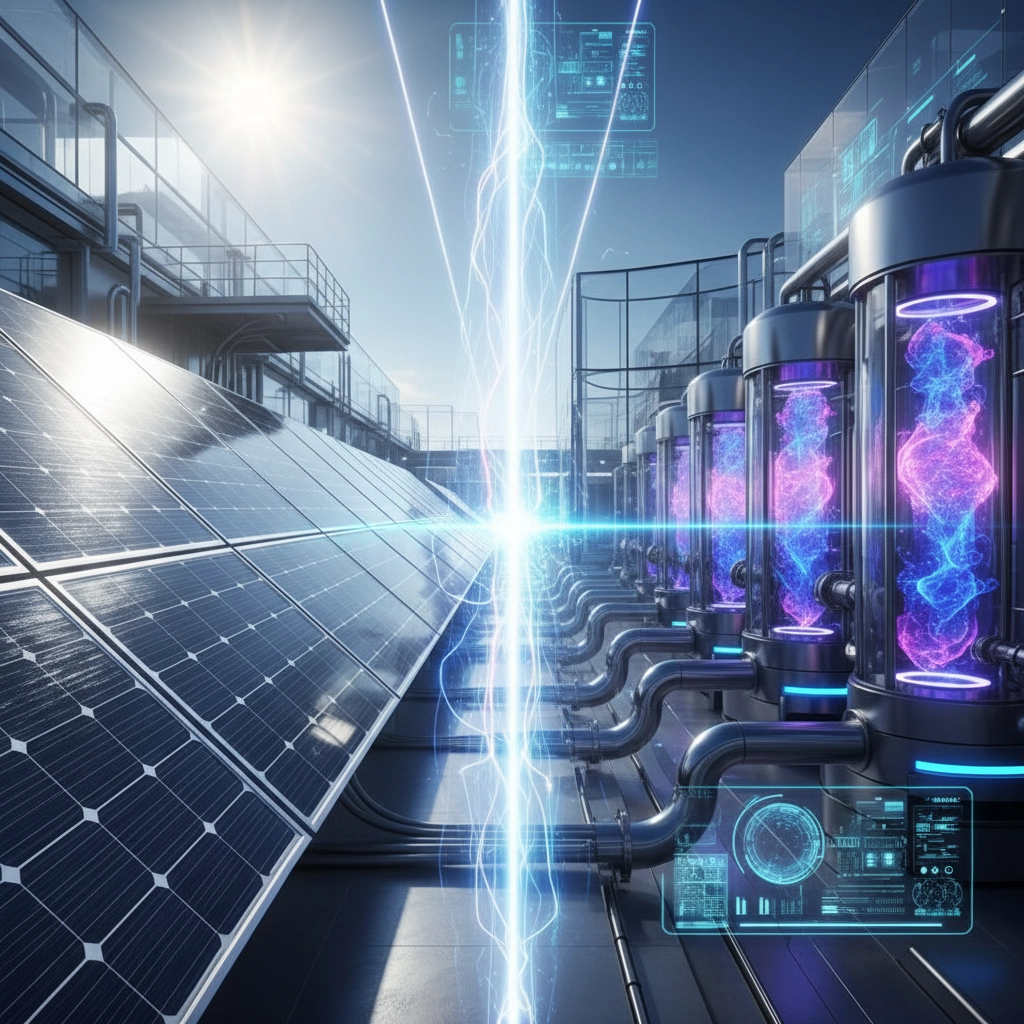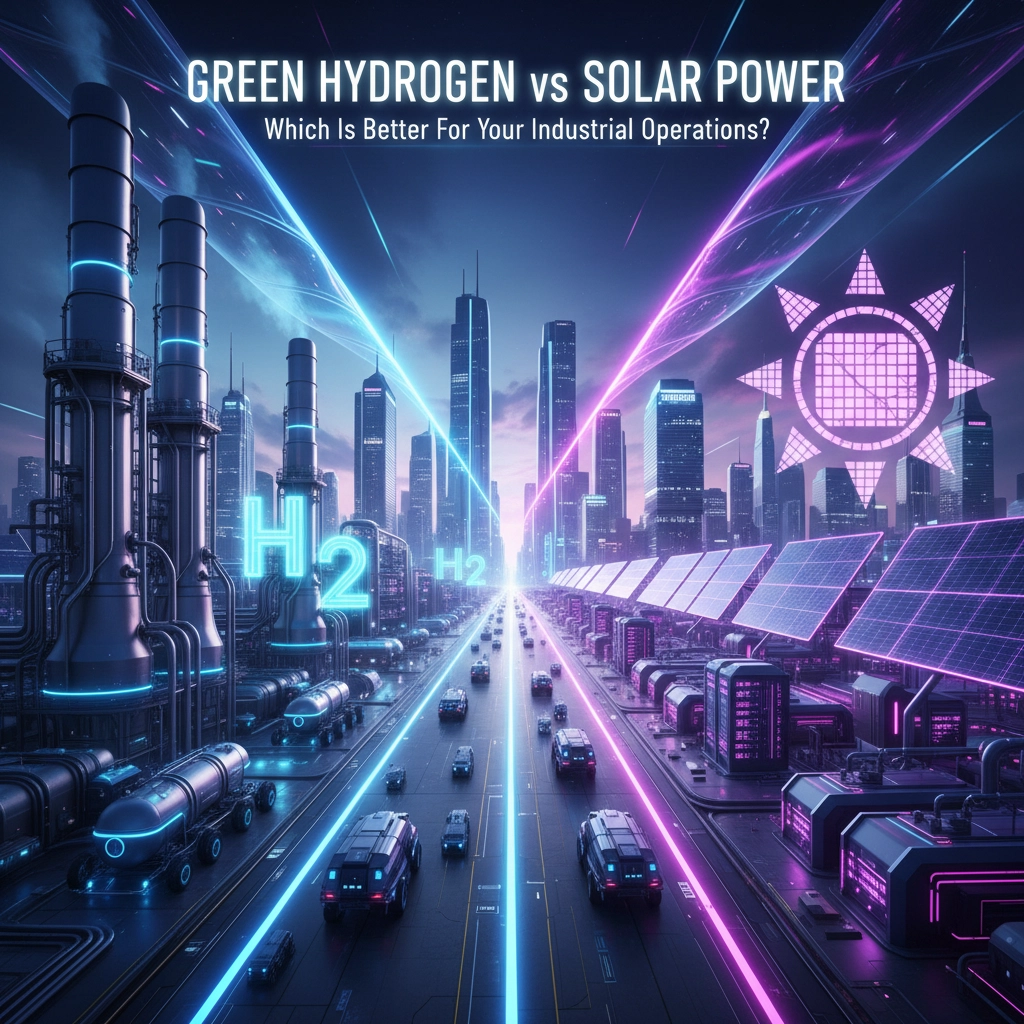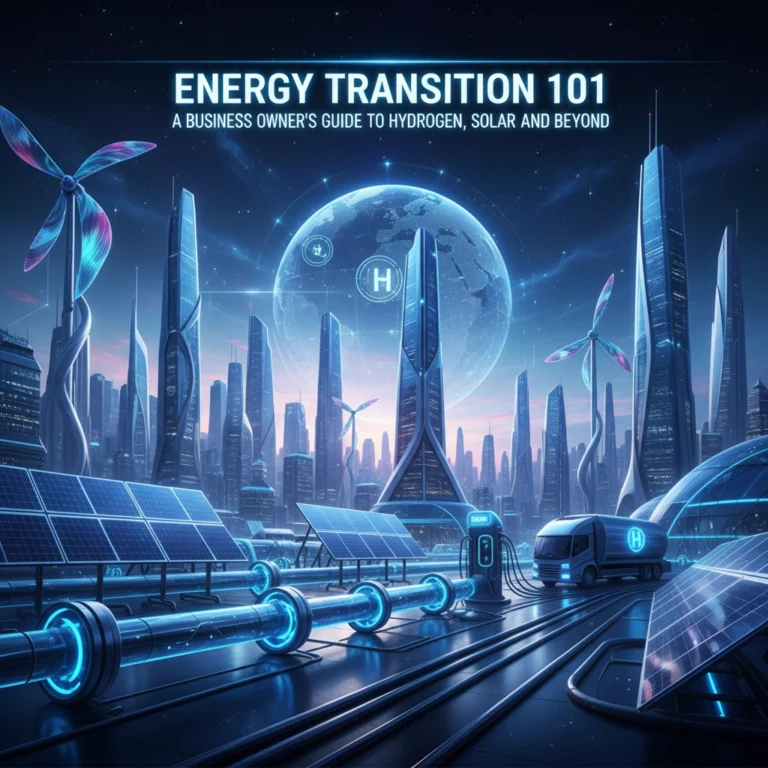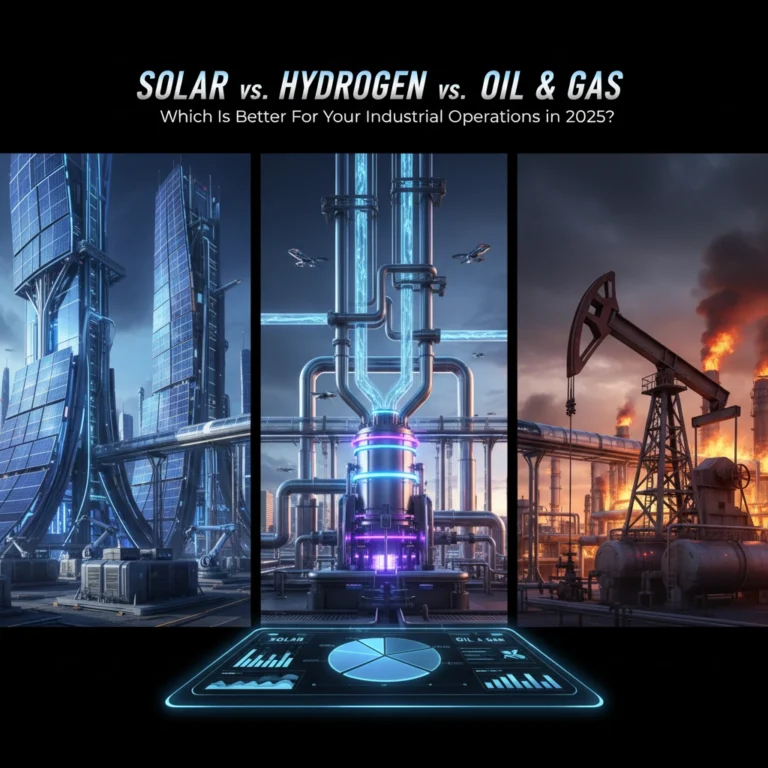Green Hydrogen vs Solar Power: Which Is Better For Your Industrial Operations?
Choosing between green hydrogen and solar power for your industrial operations isn't really an either-or decision anymore. These technologies serve different but complementary roles in the modern energy landscape. Solar power excels at generating electricity directly and cost-effectively, while green hydrogen functions as both an energy carrier and industrial feedstock: especially valuable for processes that can't easily be electrified.
The real question isn't which one to choose, but how to leverage each technology where it performs best for your specific industrial needs.
Solar Power: The Direct Electricity Champion
Solar energy has become the go-to solution for industrial facilities looking to reduce energy costs and carbon footprints. With over 520 GW of capacity installed globally, solar has proven its reliability and scalability for industrial applications.
What Makes Solar Power Shine
Solar systems are remarkably straightforward. Once installed, they operate with minimal maintenance and benefit from continuously declining costs. The technology is highly scalable: whether you're running a small manufacturing plant or a massive industrial complex, solar can be sized to meet your needs.
The financial benefits are compelling. After the initial installation, your facility essentially gets free electricity during sunny hours. Solar panels achieve conversion efficiencies between 15-22%, and while that might not sound impressive, remember that the fuel (sunlight) costs nothing.

The Reality Check
Solar's main limitation is obvious: it only works when the sun shines. This intermittency means you'll need battery storage systems or grid connections to keep operations running during nighttime and cloudy periods. Battery systems add significant upfront costs and require replacement every 10-15 years.
Geographic location matters too. Solar performs best in sunny regions, which might limit its effectiveness if your facilities are in cloudier climates. And while solar is perfect for electrical loads like lighting, motors, and electronics, it can't directly address industrial processes requiring high-temperature heat or specific chemical feedstocks.
Green Hydrogen: The Versatile Game-Changer
Green hydrogen is produced through electrolysis powered by renewable energy, creating a clean fuel that can replace fossil fuels across diverse industrial applications. The global investment in hydrogen projects has already reached $600 billion, reflecting serious commitment to this technology.
Why Green Hydrogen Is Revolutionary
Green hydrogen solves problems that solar alone cannot. It can replace coal in steelmaking blast furnaces, serve as both fuel and feedstock in chemical manufacturing, and dramatically improve the environmental performance of oil refinery operations.
The efficiency numbers tell an interesting story. While solar panels convert 15-22% of sunlight to electricity, hydrogen fuel cells achieve 40-60% efficiency when converting hydrogen back to electricity. But the real magic isn't in the conversion: it's in hydrogen's versatility.

Unlike batteries, hydrogen provides built-in storage capability. When your solar panels generate excess electricity, you can use it to produce hydrogen via electrolysis, essentially storing solar energy for later use. This hydrogen can then power fuel cells during periods when solar isn't available, or it can be used directly in industrial processes.
Green hydrogen produces zero emissions at the point of use: just water vapor. This makes it crucial for industries facing strict environmental regulations. Sectors like steelmaking, cement production, and glass manufacturing, which collectively account for about 25% of global carbon emissions, can use green hydrogen to dramatically reduce their carbon footprints.
The Challenges to Consider
Current hydrogen systems cost more than mature solar technology, though prices are dropping rapidly. The production process requires both water and electricity, so green hydrogen is most sustainable when powered by renewable sources.
Infrastructure presents the biggest hurdle. Hydrogen storage, transport, and utilization systems require significant initial investment. You'll need electrolyzers to produce hydrogen, storage tanks to hold it, and either fuel cells or direct combustion systems to use it.
Head-to-Head Comparison
| Factor | Solar Power | Green Hydrogen |
|---|---|---|
| Primary Function | Direct electricity generation | Energy carrier and industrial feedstock |
| Efficiency | 15-22% (solar panels) | 40-60% (fuel cells) |
| Energy Storage | Requires separate batteries | Built-in storage capability |
| Operating Costs | Very low after installation | Higher due to production complexity |
| Best Use Cases | Electrical loads, lighting, motors | Heavy industry, heat generation, chemicals |
| Availability | Daytime only (without storage) | Continuous when stored |
| Infrastructure Needs | Moderate (panels, inverters) | Significant (electrolyzers, storage, fuel cells) |
| Geographic Limits | Best in sunny regions | Works anywhere with renewable power |
| Decarbonization Impact | Reduces electricity emissions | Replaces fossil fuels in hard-to-electrify sectors |

Making the Right Choice for Your Operations
Go Solar When Your Needs Are Electrical
Choose solar power when your facility primarily needs electricity for standard operations: lighting, HVAC systems, motors, and electronic equipment. Solar makes excellent financial sense if you have available roof or land space with good sun exposure and can manage intermittency through grid connections or battery storage.
Solar is particularly cost-effective for industries with daytime-heavy operations that naturally align with solar generation patterns. Think assembly lines, data processing, or any operation that can shift energy-intensive activities to peak solar hours.
Choose Green Hydrogen for Heavy Industry
Green hydrogen becomes essential when your industrial processes involve high-temperature heat generation, chemical manufacturing requiring hydrogen feedstock, or operations that simply can't be electrified easily.
Industries like steel production (replacing coke in blast furnaces), cement manufacturing, oil refining, and chemical production benefit most from green hydrogen because it serves dual purposes as both fuel and raw material. If your operations face stringent decarbonization requirements or need long-term energy storage, hydrogen provides solutions that batteries simply can't match.
The Hybrid Approach: Best of Both Worlds
The most effective strategy for many industrial operations combines both technologies. Use solar power for direct electricity needs while converting excess solar generation to green hydrogen via electrolysis. This hybrid system provides immediate power during sunny periods, stores surplus energy as hydrogen for later use, and supplies hydrogen for industrial processes that specifically require it.
This integration creates a resilient, zero-emission energy system that maximizes renewable energy utilization while addressing diverse operational needs. You get the cost benefits of solar for electrical loads plus the versatility of hydrogen for specialized industrial applications.
The Bottom Line
The choice between green hydrogen and solar power isn't really a choice at all: it's about deploying each technology where it performs best. Solar power offers the most cost-effective path to electrification and should be your first step toward renewable energy. Green hydrogen solves the tougher challenges of decarbonizing heavy industry and providing flexible, long-term energy storage.
The industrial facilities succeeding in the energy transition aren't picking sides: they're strategically integrating both technologies to create comprehensive, sustainable energy systems. Solar handles the straightforward electrical needs, while green hydrogen tackles the complex industrial processes that make up the backbone of modern manufacturing.
Ready to explore how these technologies could transform your operations? Contact our energy experts to discuss your specific industrial energy needs and discover which combination of solar and hydrogen solutions makes sense for your facility.






